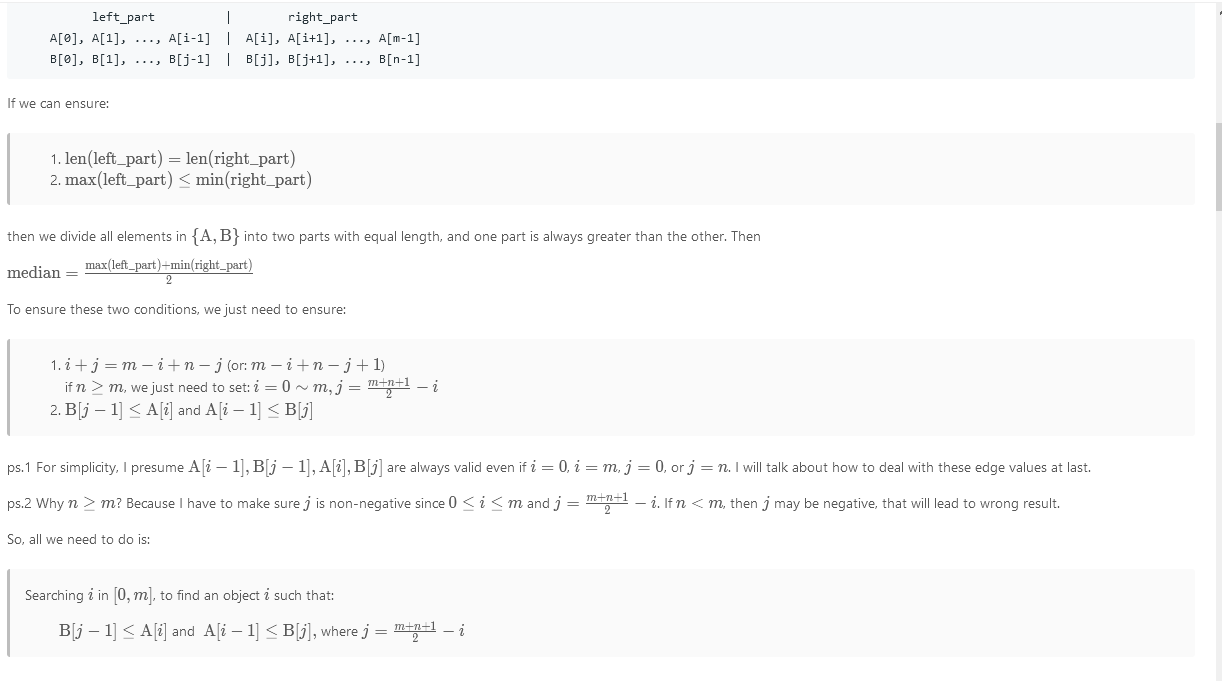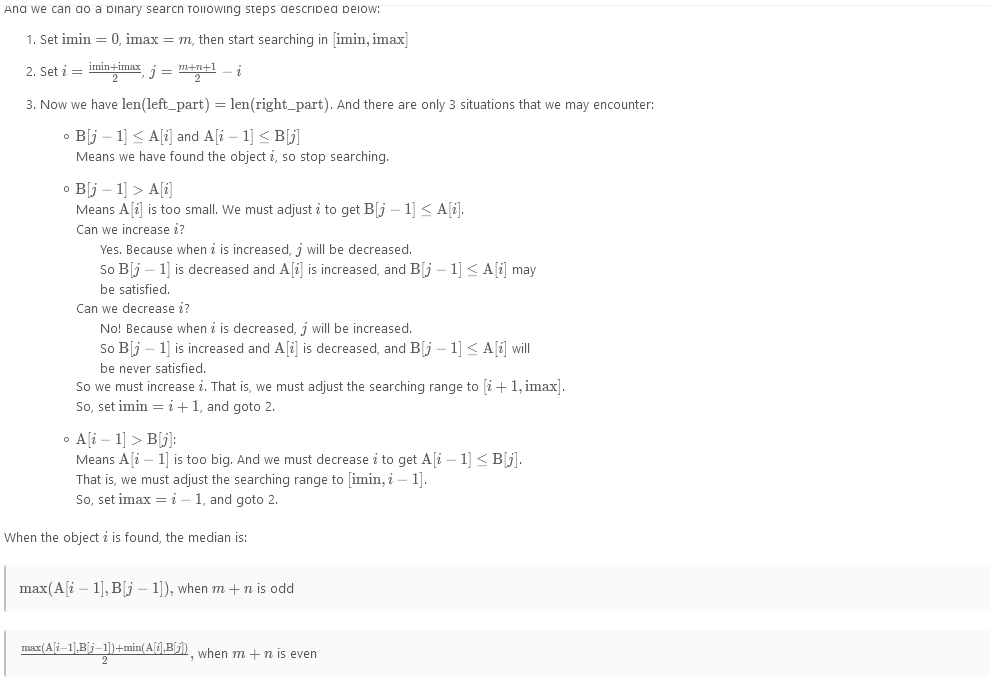前言:本科毕业1年半了,2021年1月份报名了DataWhale组织的LeetCode编程实践,每天3道题,这篇博客记录Task01。
02. 两数相加
给你两个非空的链表,表示两个非负的整数。它们每位数字都是按照 逆序 的方式存储的,并且每个节点只能存储 一位 数字。
请你将两个数相加,并以相同形式返回一个表示和的链表。
你可以假设除了数字 0 之外,这两个数都不会以 0 开头。
示例 1:
输入:l1 = [2,4,3], l2 = [5,6,4]
输出:[7,0,8]
解释:342 + 465 = 807.
这道题需要对单链表的定义和创建比较熟悉,构造一个链表节点,对输入的两个节点取value之和,并定义一个carry flag来判断是否进位,赋给新节点的value,依次遍历即可。直接给代码如下:
// Definition for singly-linked list.
// struct ListNode {
// int val;
// ListNode *next;
// ListNode() : val(0), next(nullptr) {} //构造函数,struct属性初始化
// ListNode(int x) : val(x), next(nullptr) {}
// ListNode(int x, ListNode *next) : val(x), next(next) {}
// };
class Solution {
public:
ListNode* addTwoNumbers(ListNode* l1, ListNode* l2) {
ListNode head(0), *p = &head;
int carry_flag = 0;
while (l1 || l2 || carry_flag) {
int temp = 0;
if (l1 != nullptr)
temp += l1->val;
if (l2 != nullptr)
temp += l2->val;
temp += carry_flag;
carry_flag = temp / 10;
temp %= 10;
ListNode *next = l1 ? l1 : l2;
if (next == nullptr) next = new ListNode(temp);
next->val = temp;
p->next = next;
p = p->next;
l1 = l1 ? l1->next : nullptr;
l2 = l2 ? l2->next : nullptr;
}
return head.next;
}
稍微说明一下:LeetCode的在线解释器是把我们的代码放在服务器沙盒里跑,已经预编译好了各种常用的数据结构。在这个例子中服务器对于ListNode L1=[2,4,3]有一套解释代码,能够逆序存放各个value,以及main函数里运行Solution这些都有解释代码,我们只需创建符合题目规范的用例就能执行。*
04. 寻找两个正序数组的中位数
给定两个大小为 m 和 n 的正序(从小到大)数组 nums1 和 nums2。请你找出并返回这两个正序数组的中位数。
进阶:你能设计一个时间复杂度为 O(log (m+n)) 的算法解决此问题吗?
示例 2:
输入:nums1 = [1,2], nums2 = [3,4]
输出:2.50000
解释:合并数组 = [1,2,3,4] ,中位数 (2 + 3) / 2 = 2.5
这道题是hard级别,简单总结一下:对于两个正序数组,都划分为两部分,使得左半部分最大值小于等于右半部分最小值,用二分查找法找到符合要求的划分点。这道题需要有一定数学分析并熟练使用binary search,我确实读了很久LeetCode网站上大佬写的solution,在此贴出来帮助后续回顾:

#include <iostream>
#include <vector>
#include <stdlib.h>
#include <string>
#include <sstream>
using namespace std;
class Solution {
public:
double findMedianSortedArrays(vector<int> & nums1, vector<int> & nums2) {
int m = nums1.size();
int n = nums2.size();
if (m > n) {
//to ensure m <= n
vector<int> temp = nums1; nums1 = nums2; nums2 = temp;
int tmp = m; m = n; n = tmp;
}
// binary search for i
int imin = 0, imax = m, halfLen = (m+n+1) / 2;
while (imin <= imax) {
int i = (imin + imax) / 2;
int j = halfLen - i;
if (i < imax && nums2[j-1] > nums1[i]) //i is too small
imin = i + 1;
else if (i > imin && nums1[i-1] > nums2[j]) //i is too large
imax = i-1;
else {
// i is perfect
int maxLeft = 0;
//edge values
if (i == 0) maxLeft = nums2[j-1];
else if (j==0) maxLeft = nums1[i-1];
else maxLeft = max(nums1[i-1], nums2[j-1]);
if ((m + n) % 2 == 1)
return maxLeft;
else {
int minRight = 0;
if (i == m) minRight = nums2[j];
else if (j == n) minRight = nums1[i];
else minRight = min(nums1[i], nums2[j]);
return (maxLeft + minRight) / 2.0;
}
}
}
return 0.0;
}
};
int main(){
Solution S;
int array1[] = {
1,3,5,6,9}, array2[] = {
7,4,9,2};
vector<int> nums1(begin(array1), end(array1));
vector<int> nums2(begin(array2), end(array2));
// int m = nums1.size();
// for (int i = 0; i < m; i++) {
// cout << nums1[i] <<endl;
// }
cout << S.findMedianSortedArrays(nums1, nums2) << endl;
system("pause");
return 0;
}
//参考:[C++ STL] vector使用详解 (顺序容器,存放任意类型的动态数组))
// https://www.cnblogs.com/linuxAndMcu/p/10259630.html
05. 最长回文子串
给你一个字符串 s,找到 s 中最长的回文子串。
示例 1:
输入:s = “babad”
输出:“bab”
解释:“aba” 同样是符合题意的答案。
解题思路:对输入字符串每个位置,定义两个索引变量b和e进行正反向查找字符是否相同,记录当下的回文子字符长度,并将b, e赋值给额外定义的两个变量start和last;如此遍历整个字符串,打擂台算法找到最长的回文子字符长度,注意遍历时分奇偶。代码如下:
#include <iostream>
#include <string>
using namespace std;
#include <stdlib.h>
using std::string;
class Solution {
public:
string longestPalindrome(string s) {
int len = s.size();
if (len == 0) return s;
int start = 0, last = 0;
for (int i = 0; i < len - 1; ++i) //分奇偶,以各个元素为中心左右遍历查找回文子字符串
{
longestPalindrome(s, i, i, start, last);
longestPalindrome(s, i, i + 1, start, last);
}
return s.substr(start, last - start + 1);
}
void longestPalindrome(const string &s, int b, int e, int &start, int &last) {
int len = s.size();
while (b >= 0 && e < len && s[b] == s[e])
--b, ++e;
++b, --e; //返回一格
if (e - b > last - start) {
start = b;
last = e;
}
}
};
int main(){
Solution S;
string substring;
substring = S.longestPalindrome("abbabbua");
cout<<substring<<endl;
system("pause");
return 0;
}
// 参考:https://github.com/pezy/LeetCode/tree/master/004.%20Longest%20Palindromic%20Substring
说明:许多代码都是看大佬写的,自己目前还很弱。本科所学的C++和算法与数据结构太浅了,许多C++特性和算法都未深入了解,代码也写得很少,希望自己能坚持每天刷题,勤于求教与记录总结,提升coding能力!


